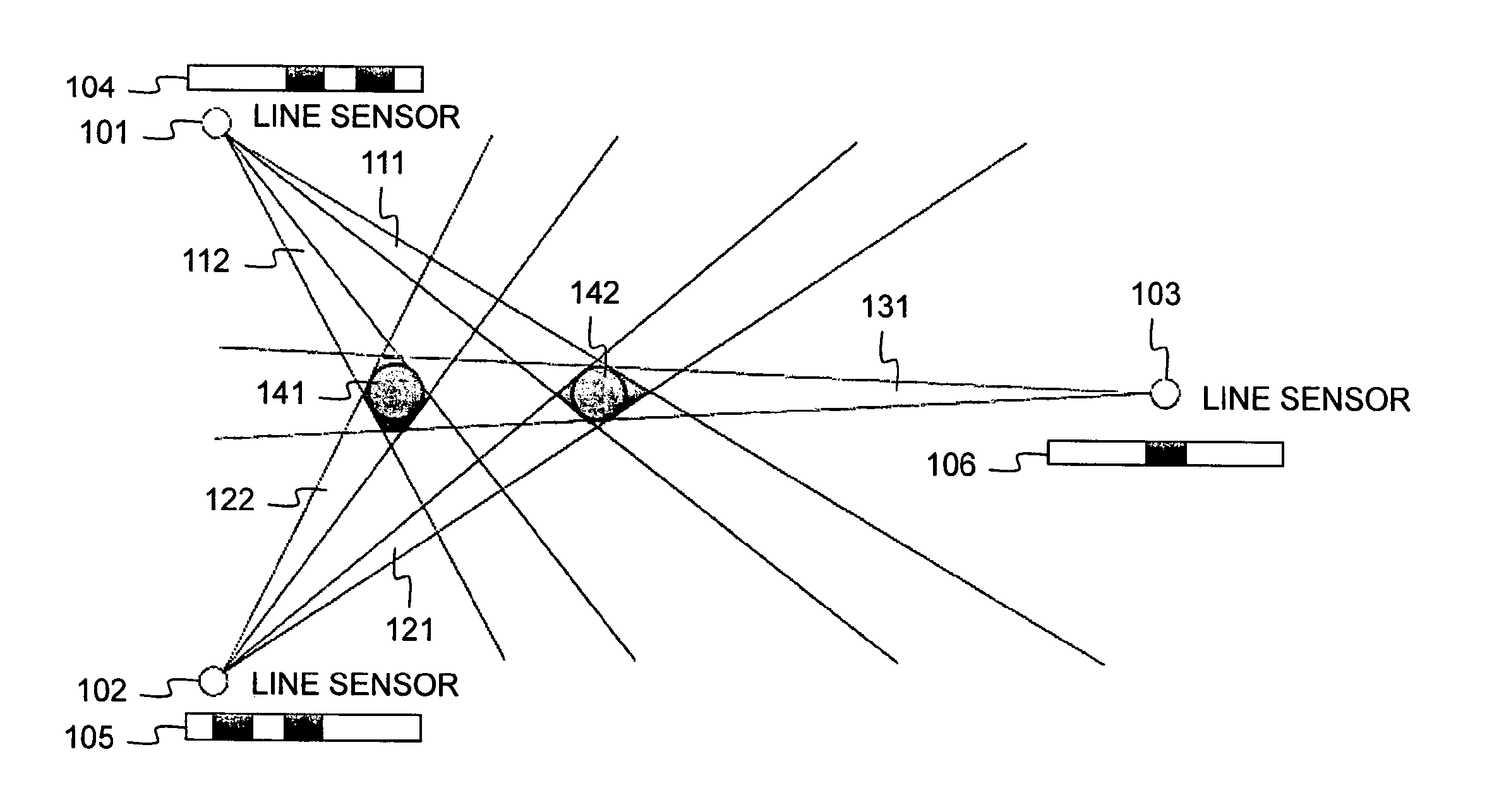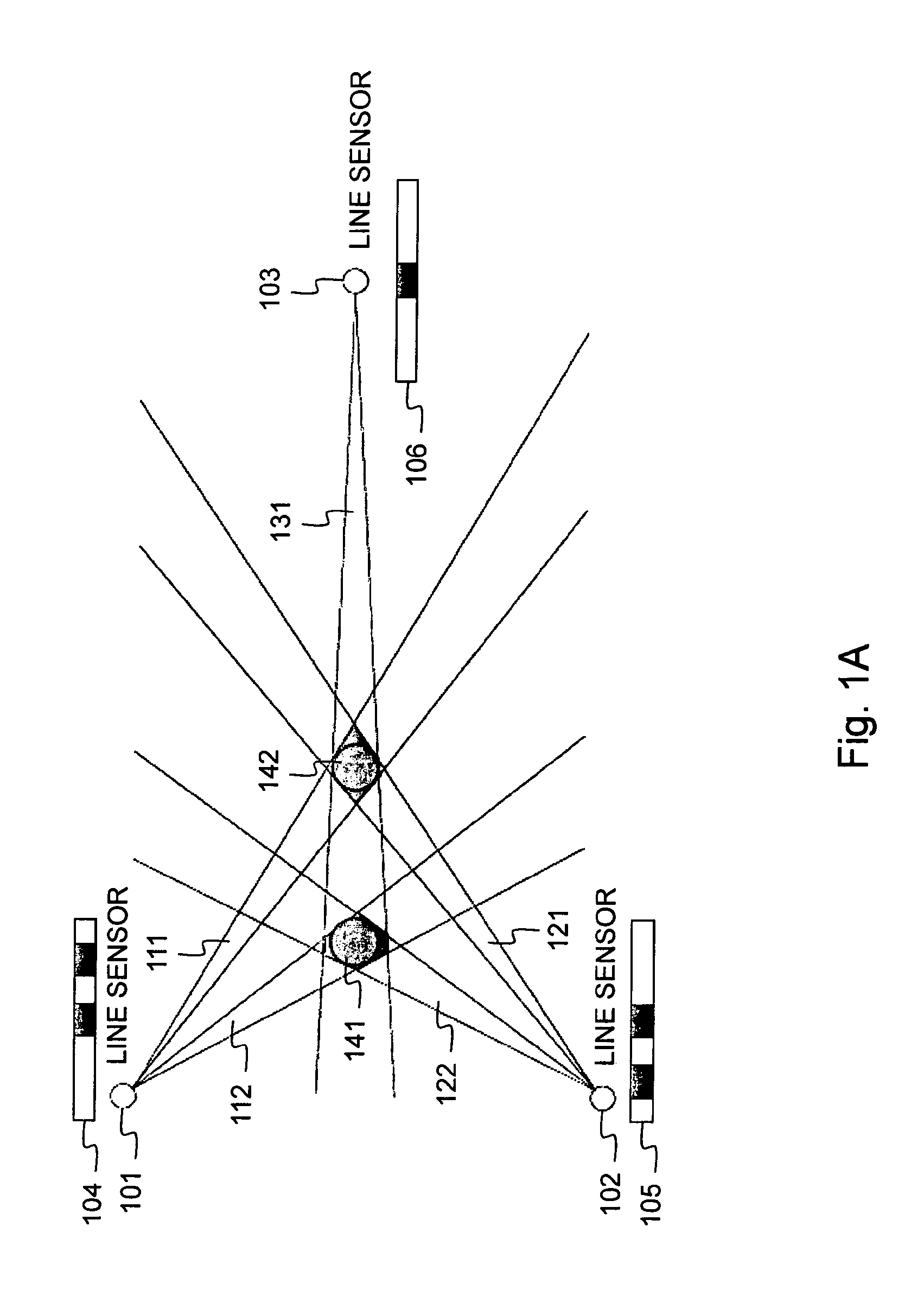Optical system for occupancy sensing, and corresponding method
a technology of occupancy sensing and optical system, applied in optical detection, instruments, electrical equipment, etc., can solve the problems of inability to produce a 2d or 3d view on the occupancy of a space by people and objects, relatively high power consumption of cameras, and inability to generate numerical or statistical information for occupancy systems, etc., to achieve accurate determination of background/foreground pixels and accurate determination of 2d/3d occupancy
- Summary
- Abstract
- Description
- Claims
- Application Information
AI Technical Summary
Benefits of technology
Problems solved by technology
Method used
Image
Examples
Embodiment Construction
)
[0072]FIG. 1A shows an embodiment of the occupancy sensing system according to the invention that consists of three light integrating optical line sensors 101, 102 and 103. These light integrating optical line sensors 101, 102 and 103 are linear arrays of photodiodes that are positioned parallel to the ground plane at a height such that the persons or objects of interest are sensed, e.g. for persons at 150 cm from the ground plane. The light integrating line sensors 101, 102 and 103 include optical light integrating devices that consist of metal plates with a slit. This slit controls the re-projection frustum of each photodiode, i.e. the light that is integrated onto that photodiode. These re-projection frustums are centred along vertical planes. The re-projection frustum of a photodiode is centred along a vertical plane that contains the photodiode and the slit, which is the light integrating device. In FIG. 4, some of these re-projection frustums are shown in a 2D representation ...
PUM
 Login to View More
Login to View More Abstract
Description
Claims
Application Information
 Login to View More
Login to View More - R&D
- Intellectual Property
- Life Sciences
- Materials
- Tech Scout
- Unparalleled Data Quality
- Higher Quality Content
- 60% Fewer Hallucinations
Browse by: Latest US Patents, China's latest patents, Technical Efficacy Thesaurus, Application Domain, Technology Topic, Popular Technical Reports.
© 2025 PatSnap. All rights reserved.Legal|Privacy policy|Modern Slavery Act Transparency Statement|Sitemap|About US| Contact US: help@patsnap.com



